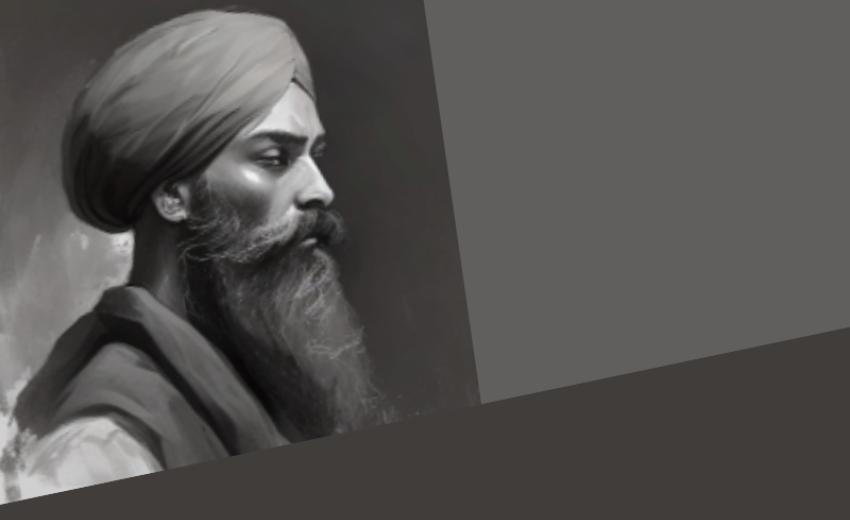The Keshdhari Saroop (Literally, the “form with uncut hair”) is an integral part of the Sikh faith and Sikh realization
“We of the Punjab were called to don the robe of the Guru’s discipleship. We wear turbans as he did; we keep long hair as he kept. We prefer the colors he liked. We are still alive with the spark he lit in our souls. The torch when lighting another creates its own images. We carry the Guru’s face, his features, his whole image, in our faces and form. As I ponder who I am, I know I am of the Guru '' - Prof. Puran Singh, Spirit of the Sikh 1978 p.44
Here, Prof. Puran Singh gives us a fresh idea to imbibe a culture of beauty in its ultimate essence, while contesting the presumption that a clean shaven person is a mark of civilized man, and this is rather a slavish imitation of features of western understanding of modernity and flamboyance. To realize the essence of Kesh requires us to take deeper physical, psychological, and spiritual contemplation. With such a vital subject at hand being misunderstood by so many, I will attempt to do critical exegesis of this insignia of spiritual enlightenment, which the Great Guru has so kindly blessed me with.
- Context
In order to understand the spiritual meaning of Kesh from the Sikh perspective, we first need a solid foundation of the importance of Kesh in Sikh metaphysics. In Sikhi, God is not seen as a faraway being, who resides in a separate realm, and creates the world like a potter*, or painter. Rather, God’s creation is intertwined with God’s essence. The creation (qudrat) is not created like how a painter creates a painting, but it is created like how a dancer “creates” a dance or like how the ocean “creates” waves. The dance can never exist without the dancer, and the wave cannot exist without the ocean. God is thus, the ultimate existence, the ultimate reality as without him, the universe has no backbone to stand upon, and immediately ceases to exist. The dance is completely dependent on the dancer for its existence, but the dancer can always exist without the dance. The dancer is both independent, and intertwined (one with) the dance of the universe.
As such, life within Sikhi is to recognize the fallacy of permanence within the dance.
ਜੈਸੇ ਜਲ ਤੇ ਬੁਦਬੁਦਾ ਉਪਜੈ ਬਿਨਸੈ ਨੀਤ ॥
As the bubbles in the water well up and disappear again,
ਜਗ ਰਚਨਾ ਤੈਸੇ ਰਚੀ ਕਹੁ ਨਾਨਕ ਸੁਨਿ ਮੀਤ ॥੨੫॥
so is the universe created; says Nanak, listen, O my friend! ||25||
- SGGS Ji Ang 1427
Kesh: A symbol of being Niara (transcendent) or Vakhra (different)?
Often, we Sikhs have stressed that Kesh is a symbol of our identity, of standing out of the crowd, etc. However, when we go back to our traditional sources, Guru Gobind Singh Ji says -
“Bharam bhed te rahe niara, so Khalis Satguru hamara” - Sri Sarbloh Granth
Translation: The one who is above impulses and distinctions, that pure truthfulness (khalis) is my True Guru.
As we can see, Guru Ji has stressed that the Khalsa is supposed to remain niara (transcending the impulses and distinctions of the world). However, when we stress “identity”, we borrow this understanding from colonial concepts of racial and cultural difference. Many Sikh scholars suggest that such understanding is purely borrowed by Sikhs from the western concepts during the colonial period, which transformed Sikhi, into Sikhism. However, I believe that we need to think differently about Kesh, which to me is an expression of our spiritual height as opposed to a mere racial difference, as that produces an idea of the “the other”.
Connecting the Dots
So how does this understanding of Sikh Metaphysics relate to Kesh? Now, while there are many reasons why Sikhs keep Kesh such as:
- Ancient tradition of the holy people, going all the way back to Vedic Civilisation, long hair has always been associated with saints. Given that Sikhs are believed to be saint-soldiers, we maintain our niarapan with our Kesh.
- Kesh aligns with Sikh ethics regarding discipline and following dharma.
- Longer hair allows for more elevated spiritual experiences
- Every hair on our body meditates on God at a stage of Sikh meditation known as rom rom. We maintain long hair to get to this state of elevated spiritual experience.
- It is considered a "kakkar," or "gift from Sachkhand" (the highest realm). We value it in this realm.
I shall be expounding upon the reasoning that maintaining long hair is a sign of separation from the outside world and adoration for the human body, in saintly expression.
- Evolving our perception
In order to truly understand this, it requires a completely new way of viewing the body. It requires us to hand over our ownership of our bodies, and our hair, to the creator most high. This can be achieved through the tuhi tuhi principle which Guru Gobind Singh Ji expounds upon in the Akal Ustat, where the land, the air, the heart, the body, and the soul are all singing “There is only You, my dear Lord!”.
Furthermore, rather than seeing our bodies as things which need to be molded to look pretty/socially presentable, instead we ought to see our body in the same way we look at the majesty of a tree.
The tree does not belong to anybody, and yet its very existence is praising God's qualities. Similarly, a flower blossoms from its bud, without reflecting upon its external beauty. Rather than carving our bodies in imperfection, we wear Kesh as a divine part of our living expression. The split ends of hair are not to be destroyed in the pursuit of “looking clean”, but rather they are actually some of the biggest compliments to the majesty of Kesh. This understanding of the body cannot ever be forced upon oneself, and it must grow from inside you. There must not be any compulsion in this sacred act of wearing Kesh, and the natural love that one has for the Kesh is only known to the lover. To ask me “Why don’t you look good/why don’t you embrace the prevalent sense of relating with beauty” would be to look at my own body from a completely foreign lens, and to subject myself to a hegemonic sense of beauty .
Our Kesh is a manifestation of our inner happiness, self content, and oneness with the almighty. The Kesh itself is the glorious manifestation of the authentic form of sainthood in humankind.
So then we are left with a question, why are we getting rid of our sainthood?
How many Sikhs do you know look at their Kesh through this lens?
Additional Notes
* I recognize the potter analogy being used in shabads of SGGS Ji, however in this context, the potter is completely separate from the pot, which is not how Gurbani explains this.
ਖਾਲਿਕੁ ਖਲਕ ਖਲਕ ਮਹਿ ਖਾਲਿਕੁ ਪੂਰਿ ਰਹਿਓ ਸ੍ਰਬ ਠਾਂਈ ॥੧॥ ਰਹਾਉ ॥
The Creation is in the Creator, and the Creator is in the Creation, totally pervading and permeating all places. ||1||Pause||
ਨਾ ਕਛੁ ਪੋਚ ਮਾਟੀ ਕੇ ਭਾਂਡੇ ਨਾ ਕਛੁ ਪੋਚ ਕੁੰਭਾਰੈ ॥੨॥
There is nothing wrong with the pot of clay - there is nothing wrong with the Potter. ||2||
- SGGS Ji, Ang 1350

